BLOG
|
|
DON’T BE FOOLED BY THE INTRODUCTION TO THIS UPPER BODY WORKOUT created and demonstrated in a video by Mike Donavanik. The frequent contributor to SHAPE.com directs his comments at women and promises the session will help to streamline the torso, leading to a lovelier, bulge-free view from behind.
Most components of this workout, which Donavanik performs over the entire 10 minutes it was designed to be worked, have been part of routines prescribed to me for the purpose of improving strength for running, not for achieving a better-looking physique. And the persons pictured demonstrating the exercises were nearly always male runners. This workout is not just for women hoping to look better. Check out the video to discover one or more new exercises that might be worth incorporating into an existing line-up. Or add Donavanik’s total workout to your list of strength routines; it’s a ready-made session of complex moves designed to build power in the lower and upper back, shoulders, and posterior chain muscles. Some, especially those performed on one leg or that twist the torso may be more difficult because balance is tested too. My favorites, in the list below, include the Deadlift to Row, Single leg Romanian Dead Lift + Row, Bodyweight I-T-Y, and Super Duper Superman. The remaining exercise are rather difficult for me, which means I really need to work on the muscles involved and possible use lower weights and find slightly easier variations before attempting the harder versions. Deadlift to Row Windmill Press Single leg Romanian Dead Lift + Row Good Morning + Horizontal Press Alternating Plank Row Press Downward Dog Row Bodyweight I-T-Y Super Duper Superman Donavanik can seem a bit silly at times, but his routine is not. RUN & MOVE HAPPY! https://www.shape.com/fitness/videos/workout-video-upper-back-exercises-tone-and-tighten-hard-reach-areas
0 Comments
WEEK 10 RUN-WALK-BIKE ACROSS AMERICA STARTS TOMORROW
Segment 24: West Union IA to Boscobel WI Segment 25: Boscobel WI to Madison WI Segment 26: Madison WI to Milwaukee WI WOW! ON THE FIRST SEGMENT THIS WEEK THE MIGHTY MISSISSIPPI RIVER IS CROSSED. Even virtually it seems like a really big deal. Notice, when leaving Iowa, that both the state’s western and eastern borders are formed by rivers, the Missouri and Mississippi Rivers, respectively. Iowa is the only state with this distinction. The National Geographic Society website has a student activity for grades 6-8, in which students examine the role of rivers in the settlement of the Americas; if your kids are walking, running, or biking this challenge, it might be worth exploring as a learning activity. Moving into the state of Wisconsin, the route follows along the Wisconsin River, a tributary of the Mississippi and the longest in the state. Apparently, there are bald eagles to be seen along the northern Mississippi River valley, between Minnesota and southern Illinois, but mostly in January and February. Wisconsin is one of the USA’s top dairy producers and is famous for its cheese. Fans of the professional football team, the Green Bay Packers are known as “cheeseheads”. Due to settlement of its lands by European, especially German and Scandinavian immigrants in the 1800’s and early 1900’s their cultural influence persists. The remainder of the week our travels continue across Wisconsin to its two largest cities. The first is the state’s second largest and state capital, Madison, named after President James Madison and home of the University of Wisconsin. Milwaukee, the largest, is next. According to the TrekTravel.com online itinerary for its bike tour (week 4, day 28), the route to Madison from Boscobel WI takes you through a beautiful ‘unglaciated region” of Wisconsin’s Driftless Area, where you experience forested steep ridges and rolling hills, deep green valleys, spring-fed waterfalls, and crystal clear trout streams possessing dramatically carved limestone bluffs. It says that nearby farms, which use sustainable growing practices, produce organic foods and other treasures like heirloom vegetables and artisanal cheeses likely to be found in Madison restaurants and its farmers market. Part of the tour company's admitted enthusiasm for this city is due to the fact that Madison is its hometown, which explains the wonderful insight into the area's charms. Milwaukee is at the eastern edge of the route through this state and offers up scenes of the Lake Michigan western shoreline and the Brewers’ baseball team stadium, Miller Park. It is the home of iconic Harley-Davidson motorcycles and the company's landmark building-housed Museum. German settlers were responsible for the city’s beer-making and -loving heritage. A large Polish presence was established as well, along with immigrant communities from Lithuania, Italy, Ireland, Russia, Bohemia and Sweden. Festivals still honor their influence on the city. There is much to see and enjoy in Wisconsin. Get ready to cross another large body of water, Lake Michigan known by locals as "The Big Lake", next week! RUN & MOVE HAPPY! http://nationalgeographic.org/activity/rivers-of-americas/ https://en.wikipedia.org/wiki/Wisconsin_River https://en.wikipedia.org/wiki/Wisconsin http://www.baldeagleinfo.com/eagle/eagle1.html https://en.wikipedia.org/wiki/Driftless_Area https://en.wikipedia.org/wiki/Madison,_Wisconsin http://trektravel.com/trip/cross-country-usa-bike-tour/ https://en.wikipedia.org/wiki/Milwaukee https://www.harley-davidson.com/us/en/museum.html http://milwaukee.brewers.mlb.com/mil/ballpark/ CELEBRATE ONE REGION OF MICHIGAN’S “FRUIT BELT” IN SOUTH HAVEN ON THE SECOND WEEKEND OF AUGUST. There’s a 10k run, 5K run, and a 5k walk with separate start time and medals for top finishers on August 10, 2019. This year is the 56th event, which was initially held in 1963. It coincides with the 150th anniversary of the city of South Haven, in southwest Michigan
In the Blueberry Festival, registration for the runs and walk are separate and medals are awarded to gender and age groups. In the runs there are overall winners and winners in 14 age groups for males and females. In the walk there are 3 age groups each for males and females. The website indicates the run/walk events are part of the “Michigan Fruit Belt Series”, but the organization does not seem to exist as an online entity that can be referenced. The last posting of all fruit events collectively was several years ago, when a medal was apparently awarded that identified each event. The other series’ events do not seem to be coordinated by a single entity, nor do registrations appear to be linked. However, those currently being contested as runs and walks have separate walks and could be wonderful opportunities for walkers. Michigan Fruit Belt “Series “as it exists in 2019: STRAWBERRIES Hartford MI Hartford Strawberry Run 10k & 5k, walk (non-competitive) 5k; June 8, 2019 Results at https://raceday.enmotive.com/#/events/2019-hartford-strawberry-run/results CHERRIES Watervliet MI Gene Bednarowski Cherry Run & Walk, June 29, 2019 https://runsignup.com/Race/Events/MI/Watervliet/GeneBednarowski5kCherryRun Traverse City MI Cherry Mile; July 9, 2019 https://runsignup.com/Race/MI/TraverseCity/CherryMileJuly 9 PEACHES Coloma MI; August 3, 2019 Glad-Peach Run & Walk https://runsignup.com/Race/MI/Coloma/ColomaGladPeachRun BLUEBERRIES South Haven MI; August 13, 2019 National Blueberry Festival Run & Walk https://raceroster.com/events/2019/23267/national-blueberry-festival WATERMELONS Lawrence MI; August 31, 2019 Lawrence Watermelon Run 5k, 10k, and 15k https://localraces.com/events/lawrence-mi/watermelon-run GRAPES Paw Paw MI; September 7, 2019 Run Drugs Out of Town 5K Run & Walk https://runsignup.com/Race/MI/PawPaw/PawPawGrapeLake5Kwalkrun For those living in the region, it might be fun planning to participate in each/all the festivals (at this time in July we’re in the middle of the fruit belt series), and enjoying the fruity food (pie, other desserts) commonly promoted by such organizations. For those who don’t live nearby, it may provide inspiration. Perhaps there a festival theme that might appeal to you in your own state or region, in which a run or walk is contested. The smaller the festival the less the traffic and competition. A unique medal collection might be the result. Potential festival themes: Food Wine, cider, or beer Sailing, boating, or coastal towns Art or crafts County fairs National holidays Historical or heritage days Ethnic celebrations The SUMMER CHALLENGE III: FASTEST 5K OT SUMMER OF FUN 5K’S could be mounted with a theme in mind. Whether there two or ten events making up a 'challenge', it could become a tradition to visit the same few quaint towns each year and celebrate with the locals in a small way. RUN & MOVE HAPPY! https://runsignup.com/Race/MI/Various/MichiganFruitBeltSeries THE HUGE MEDIA FANFARE GENERATED FROM A NUTRITION STUDY ON INTERMITTENT FASTING a few days ago overshadowed the July 24, 2019 release of results from an Austrian study which examined the potential gut microbiome benefits of apple core eating in conventionally- versus organically-managed apples. Bacteriologically, it seems eating a whole raw apple, including the core, seeds, and little flowery end (calyx), beats the heck out of eating just the yummy flesh and skin.
Before reading a “Frontiers News Science” blog piece that discusses the research and quotes the study’s senior author, or the much longer original scientific publication in the journal Frontiers in Microbiology, understanding the differences between the two types of apple-growing “management” systems is helpful. According to the publication, harvested organic apples originated from an orchard “which follows the international ‘demeter’ guidelines of organic farming “using sterile gloves and instruments”. Harvested conventional apples originated from a conventional orchard and had been cold-stored, short-term in a controlled atmosphere, and “washed and wrapped in polythene sheets for sale.” During the study all apples were handled in an identical manner. The research showed that highest numbers of bacteria in each type of apple were found in its seeds, the next highest in flesh (pulp), and the least in peel. Conventionally- and organically- managed apple bacterial numbers were roughly equal, about 100 million in a 240-gram apple. The blog article reported that by not eating the core, the bacterial number consumed falls to about 10 million, roughly 9-10 times less. The other highlight covered by the Frontiers News Science blog concerned bacterial strain diversity; it was greater in those handled as organic fruit than fruit processed in the conventional manner. Higher diversity, senior author Professor Gabriele Berg of Graz University of Technology was quoted as saying, is “expected to limit overgrowth of any one species, and previous studies have reported a negative correlation between human pathogen abundance and microbiome diversity of fresh produce.” Study results were supportive of this thinking, which showed that “Escherichia-Shigella – a group of bacteria that includes known human pathogens—was found in most of the conventional apple samples”, although in low abundance. This bacterial group was absent in the organic apples. Conversely, the famously beneficial pro-biotic Lactobacillus microbes were found in organic but not in conventional apples. Important points made by the two sources: To consume the most bacteria, eat a whole raw apple, including core, which contains seeds
Also mentioned in the blog piece was information concerning possible taste differences between organically- and conventionally-managed produce. Certain bacteria known to synthesize compounds which impart a strawberry flavor were found to be “significantly more abundant in organic apples” in the study, “especially on peel and flesh samples.” The findings from this investigation definitely have been placed in my “Good-To -Know” file, which will likely influence future eating and shopping decisions. I thought the only food sources of Lactobacilli were dairy and fermented foods but a bit of digging into the topic indicates some species occur in the environment and on plants and may be responsible for fermentation that occurs in spoilage of fruit juices. [Anyone knowledgeable on the subject, please enlighten us further!] How does this nutrition science relate to athletics and fitness? Apples are a portable carbohydrate/energy source that don’t require special storage. The fruit’s fiber and nutrient content make it Knowing that types of bacteria scientists believe are beneficial to the gut microbiome can be so easily obtained can make a post work-out snack choice easier, especially when packing food is necessary. In the fall, when MacIntosh apples first ripen and come directly from the orchard to store, they are my very favorite fruit. I’ve eaten the whole apple for years to avoid disposing of the core later; plus, I like the crunch of the seeds. The results of this study also mean that it can be worthwhile to seek out organic apples or at least those offered at established roadside stands and farm market vendors. That the organics may indeed be tastier encourages spending extra on this fruit item. RUN & MOVE HAPPY! NOTES:
https://blog.frontiersin.org/2019/07/24/microbiology-apples-bacteria-organic-microbiome/ https://www.frontiersin.org/articles/10.3389/fmicb.2019.01629/ https://www.sciencedaily.com/releases/2019/07/190724090255.htm https://www.sciencedaily.com/releases/2014/03/140310090919.htm https://www.forbes.com/sites/alicegwalton/2019/07/25/the-100-million-bacteria-on-apples-may-be-key-to-their-health-benefits/#44bfb03c1e2f https://www.orangepippin.com/varieties/apples/arlet-swiss-gourmet https://healthyeating.sfgate.com/foods-containing-lactobacillus-bifidobacterium-3728.html https://en.wikipedia.org/wiki/Firmicutes http://www.medibiztv.com/articles/spoilage-of-fruit-juices https://aem.asm.org/content/aem/16/9/1326.full.pdf https://commons.wikimedia.org/wiki/File:Fuji_apple.jpg (not the apple used in the study) Scott Bauer, USDA ARS [Public domain] STRETCHING RITUALS GET NEW RESPECT. It was gratifying to read Robert Roy Britt's article on the Elemental page of Medium.com, “The New Bottom Line on Stretching and Exercise”. The subtitle also attracted my attention, indicating that if performed correctly, it can be beneficial.
Pre-competition or -speed workout stretching, especially static, has been discouraged because research had shown the practice can hurt performance. Dynamic stretching seems to have enjoyed a better reputation. However, Britt’s article’s title suggests expert’s thinking on the subject is changing. His piece begins with an opinion of one expert, David Behm, who testifies to stretching’s personal value to him over the course of many years of high-level sport participation. Behm indicates that stretching, as an everyday-without-fail routine, is an activity intended to preserve or increase range of motion and overall to decrease the chances of injury in the enjoyment of various physical activities. Additional experts quoted in Britt's article weigh-in on other aspects of stretching, like the acute/short term effects when done as preparation for athletic activity (warm-up, static then dynamic stretching, and finally sport-specific movements) that can prevent injury, and the long-term effects which can lead to increased range-of-motion and improved balance even in inactive people. What Britt has written explains why my daily static stretching and dynamic mobility (myrtl’s) routines, which now take as long to get through as a 3 to 4-mile run did years ago, are so valuable to my continued participation in exercise and recreational sport, and overall to moving freely and feeling great. His article distinguishes between maintenance stretching for musculo-skeletal health and pre-performance stretching in preparation for intense training and competition. That’s what I ‘m reading into it, anyway, possibly because of a secret belief that all the time and effort I put into it each day benefits more than just my fitness life. That this ritual will allow me to retain qualities of posture and movement that signal a younger rather than an aging physiology. Not a map to the fountain of youth but the map’s key? Matt Fitzgerald, in an article for PodiumRunner.com, agrees that attention should be paid every day to maintaining and improving flexibility for runners. Fitzgerald argues that if physical therapists repeatedly prescribe stretching to help athletes rehabilitate from injuries. “it only stands to reason that it can also prevent many cases of these same injuries”, or at a minimum the re-occurrence of injury. Exactly! The stretch and mobility routines I now perform daily were originally were prescribed to me by physical therapists or trainers as part of rehab sessions that also included strength and balance exercises. Fitzgerald’s advice is to stretch specific muscles (hamstrings, calves, and hip flexors), tendons (Achilles) and the ilio-tibial band, all known to be tight in runners, daily. Check out both articles if you think you feel better after stretching and have wondered why trainers, in the recent past, have argued against it. The information is refreshing in my opinion. It provides permission to concentrate on stretching as a singular goal or for easing into other exercise, even when the purpose is not to prepare for a performance workout or competitive event. Behm provides a general guide for pre-performance stretching. Fitzgerald offers specific moves for both static and dynamic sessions. Stretching done properly can benefit health and performance it seems, both in the short term and long term. When searching for stretching advice, it seems that an updated approach, which may involve old-school moves, could be most helpful. RUN & MOVE HAPPY! https://elemental.medium.com/does-stretching-do-any-good-ec085a8ddd90 https://www.podiumrunner.com/running-101-stretching_12081 https://journals.humankinetics.com/view/journals/jsr/27/3/article-p289.xml?tab=pdf https://www.risephysicaltherapy.com/blog/static-vs-dynamic-stretching https://humankinetics.me/2018/01/29/static-stretching-vs-dynamic-stretching/ WEEK 9 RUN-WALK-BIKE ACROSS AMERICA 2019 STARTS TOMORROW
Segment 21: Sioux Falls SD to Okoboji IA Segment 22: Okoboji IA to Clear Lake IA Segment 23: Clear Lake IA to West Union IA The travel route on the first day/segment this week takes Across America challengers through the corners of three states: southeastern South Dakota, southwestern Minnesota, and northwestern Iowa. The next two days/segments will be spent crossing, west to east, the gently rolling hills and cornfields of Iowa. Vacation spot Okoboji is the first stop on this leg of the trip that will end at the west coast of Lake Michigan, one of the Great Lakes. Interestingly Okoboji sits between two lakes, West Okoboji Lake and East Okoboji Lake, which are part of a chain of five ‘glacier carved lakes’ known locally as the “Iowa Great Lakes”. The chain of lakes, which also include Spirit Lake, the largest, and Upper Gar, Lower Gar, and Minnewashta extend southward from the Minnesota border. According to the VacationOkoboji.com website, “spring-fed West Lake Okoboji is a beautiful shade of blue” and is the “centerpiece” of the lakes and the communities that surround them. The mid-week destination, Clear Lake IA, is another vacation-tourism stop in Iowa because of its location on the shores of the large lake for which it is named. The Surf Ballroom near this town is famous as the last gig that Buddy Holly, Richie Valens, and The Big Bopper played before boarding a small private plane that crashed and made sad rock-and -oll history on February 3, 1958. The Ballroom still has concerts and has a Holly tribute show every February. The route to West Union IA from Clear Lake takes runners, walkers, and cyclists through more rolling hills and cornfields, as might be expected in one of the states considered to form “America’s Heartland”. Did you know its wind farms perform enough work to lead the nation in wind power generation? The charts in a Wikipedia item on the subject show power production is at lowest levels in the summer months. We would not be likely to encounter persistent winds an in-person trip through this area in mid-July. There is much more than agriculture in Iowa. However, on this trip you will see mostly beautiful farmland, quaint towns, and of course, the lakes. I searched the internet for information on Iowa as part of the Great Plains, and learned that the definition of this region varies by source and that the “Midwest”, “Plains States”, and “Great Plains” are not synonymous designations of the same geographic areas. As proclaimed every week, my online ‘exploration’ of the virtual route segments traveled on this trip merely scratches the surface of what there is to discover, I am eager to travel through these areas in real time in the future. America is SO BEAUTIFUL. I’m convinced that nearly every local humble 5K race along the route could be a memorable experience. RUN & MOVE HAPPY! http://vacationokoboji.com/ https://en.wikipedia.org/wiki/Clear_Lake,_Iowa https://en.wikipedia.org/wiki/Wind_power_in_Iowa https://en.wikipedia.org/wiki/Great_Plains https://www.reference.com/geography/states-make-up-great-plains-e8100d6eec1f872 http://www.city-data.com/forum/general-u-s/1426323-great-plains-region-differences-midwest.html “HOW A BARTENDER DREAMED UP THE FALMOUTH ROAD RACE” is the bostonglobe.com article that inspired this post. In May 2015, a condensed version of Paul C. Clerisi’s work “A History of the Falmouth Road Race: Running Cape Cod” was reprinted, with permission, online. It’s about the quirky 1973 origin of a modern competition that is loaded with local tradition, which started as an effort to help high school girl cross country runners compete in their state’s championship finals.
Previous “Saturday Is Race Day” 2018 posts have covered the Barkley Marathons in mountainous Tennessee, Dipsea Race in Mill Valley CA, and the Dirty Kanzaa 200 cycle event in remote central eastern Kansas. In each of these endurance competitions a couple or group of die-hard sport enthusiasts decided to create a unique challenge for themselves that grew into a regional celebration. Falmouth is a bit different; it began with a dream and was realized out of necessity. (This and other famous races are run on Sundays, but this detail is ignored for this section!) For those not familiar with New England, an entry from a google.com search provides some geographic orientation. “Falmouth is a coastal town on Cape Cod, Massachusetts. It is known for its beaches, such as Falmouth Heights, across from the island of Martha’s Vineyard. Inland, Highfield Hall and Gardens, a 19th century estate, exhibits contemporary art. The landmark Nobska lighthouse stands at the town’s southern tip. The Woods Hole Science Aquarium is home to marine life such as seals and lobsters.” Actually Woods Hole is also home to other famous marine science institutions. A runnersworld.com slideshow on iconic American races provides a description of the 7.1-mile “nearly completely seaside” course. Starting in Woods Hole, it follows a “narrow, hilly, winding and tree-shaded roads”, then passes Nobska Light, runs alongside Martha’s Vineyard Sound, crests on a hill dominated by a huge American flag, and finally heads down to the finish at Falmouth Heights Beach. The scenery alone argues strongly for putting this event on a ‘life list’ of essential experiences for runners and walkers. But the back story is what makes it worthy of highlighting as an example of a personal event that became a tradition for many locals. Clerisi’s story is detailed, colorful, and somewhat suspenseful. The briefer version is that a homegrown amateur runner, who tended bar at a Boston establishment near the finish line of the Boston Marathon, sought to bring similar excitement to the beachfront Cape Cod area where he worked, and secure the participation of an elite U.S Olympic marathon champion he idolized. The article explains that Thomas Leonard had followed the early running career of Frank Shorter during his New England school days, then watched the American take gold for the U. S. in the 1972 Munich Summer Olympics marathon event. He dreamed of bringing Shorter to run a race in Falmouth, it said However, when in 1973 the Falmouth High School girl’s cross-country club team needed financial support to attend the Massachusetts state championships (women were not invited to compete until 1971), the tale is that Tommy Leonard stepped up to hold a fund raiser event. And that’s how it all started, according to the Boston Globe piece. On August 15, 1973, ninety-eight runners took off in rain and wind, many of them bartenders, waitresses and locals. T-shirts and food provided by local restaurants and bars were sold which, in addition to entrance fees and post-race activities, raised money for the women’s cause. Other famous names competed that year but not Shorter. Let’s get back to the reason this race is being highlighted; it’s an example of a custom-designed fitness challenge. A person who loved his town and his sport, out of generosity, decided to organize a memorable event that involved personal friends and local hangouts. And to invite famous runners. Such events need not be large or widely publicized, or bring in celebrities. Just personal and custom-made for your enjoyment. Solo or with others. If you aren’t moved to create a smaller personal event, consider reading the full story of the charming beginnings of this race. You may be inspired to participate. I do, but realistically may only be able to visit the area outside of the actual race date (in 2019 the Falmouth Road Race will be held on August 18). Still, it would be fun to follow the official route, enjoy the scenery, and seek post-event refreshment at the beach-side joints near the annual finish line. The 7-mile Falmouth Road Race appears as the state of Massachusetts’ entry on John Run/Walk Shop’s “The Fab 50 - Best Non-Marathon Race in Each State”. There’s also a 3.2 mile walk event on August 17, 2019. Check this LIST out to find upcoming races that will be held before Labor Day.
August is the last full month of summer vacation time and is perfect for personal or organized challenge events. Get moving. RUN & MOVE HAPPY! (UPDATED JULY 2019) https://www.bostonglobe.com/magazine/2015/08/15/the-most-famous-miles/vEYimIXNOrFu3tLAjq6WfO/story.html https://en.wikipedia.org/wiki/Woods_Hole,_Massachusetts https://www.runnersworld.com/races-places/g21253155/best-american-races/?slide=26 https://www.bridgeotw.org/2019-falmouth-road-race http://www.johnsrunwalkshop.com/fab-50-best-non-marathon-race-state/. If This Is Heaven, I Am Going to Be a Good Boy.: The Tommy Leonard Story By Kathleen Cleary https://amzn.to/2IWKBLc https://www.amazon.com/History-Falmouth-Road-Race-Running/dp/1626198942 WEBMD.COM’S ARTICLE “Health Benefits of Watermelon” promotes adding this delicious summer fruit treat by presenting 15 body-friendly reasons in a slideshow. Slide number 3 informs that “watermelon in rich in an amino acid called l-citrulline that may help move blood through your body and can lower blood pressure.”
L-Citrulline’s other potential positive health effects on skeletal muscle tissue may be of special interest to athletes, as discussed in a review article “L-Citrulline Supplementation: Impact on Cardiometabolic Health” by scientists from Louisiana State University and Pennsylvania State University:
Research studies that have investigated the effects of l-citrulline on blood pressure and other measurement of cardiovascular health identify watermelon as the food with the highest concentrations. Some have used watermelon extract or juice as supplements to boost the diets of research participants in their protocols. Watermelon’s Latin name is Citrullus lanatus. The same review article cited above explains a bit more about the amount of l-citrulline found in watermelon. Concentrations in US-grown melons “can range from 1.6 to 3.5 g/kg of fresh watermelon” it states. The authors’ calculations show that to receive the minimum effective “dose” of this amino acid employed in research studies, about 2.2 to 3.3 pounds of fresh raw watermelon would need to be consumed daily. To receive the maximum dose, about 7.3-16.5 lbs/day would be needed. As a result, for scientific purposes, synthetic l-citrulline or watermelon extract is used for research supplementation studies. Eating several pounds of watermelon each day might prevent intake of other healthy foods! So, although there are potential benefits to be gained from ingesting daily therapeutic doses of watermelon, a manageable serving of a slice or two provides a delightful sweet taste experience that can be enjoyed at any meal or snack time. In spite of a having high glycemic index value (72), the low sugar content in each serving (5 gm) adds up to a low glycemic load. Other nutritious substances found in watermelon, also identified in the webmd.com slideshow, make this easy, go-to staple of summertime a wise fruit choice: Lycopene Beta-cryptoxanthin Vitamins A, C, and B6 The WebMD.com slideshow emphasizes other health-related reasons to frequently pick watermelon as a treat; there are benefits for skin, eyes, joints, and muscle. Clearly summer is best season for buying fresh watermelon. References vary a bit on the exact recommended months, but June through August are a safe bet. Extending the season a month earlier and later might also be okay (May through September). Personal preferences likely determine whether seeded or seedless are the most tasty. I love the visual contrast between the dark-blackish seeds and the beautiful red-pink flesh and white+ green rind. I don't mind that the traditional melons are larger and don't come in "personal sizes", as the seedless varieties are advertised in some stores. Slices are served on our dinner table along with other dishes to encourage eating by everyone, sometimes in place of a green salad. Those remaining on the plate after the meal are cut into bite-sized pieces of fruit-flesh only, and stored in the refrigerator for easy snacking. If wishing to avoid serving fruit juices to children for hydration, try adding small cubes of watermelon and ice to water, sparkling or still (+ a spearmint leaf if you have a summer herb garden). Or just serve them watermelon whole or as a slushy made of the fruit; it's 92% water! Consider having fun and experimenting with summertime watermelon for a healthy, muscle-friendly dietary treat. RUN & MOVE HAPPY! https://www.webmd.com/diet/ss/slideshow-health-benefits-of-watermelon https://www.ncbi.nlm.nih.gov/pmc/articles/PMC6073798/pdf/nutrients-10-00921.pdf https://www.ncbi.nlm.nih.gov/pubmed/29107336 https://www.hort.purdue.edu/rhodcv/hort410/waterm/wa00001.htm https://www.mayoclinic.org/healthy-lifestyle/nutrition-and-healthy-eating/in-depth/fiber/art-20043983 https://www.canr.msu.edu/news/seedless_watermelon_how_do_they_do_that https://www.health.harvard.edu/diseases-and-conditions/glycemic-index-and-glycemic-load-for-100-foods http://www.health.harvard.edu/diseases-and-conditions/the-lowdown-on-glycemic-index-and-glycemic-load https://adrenalfatiguesolution.com/fruits-lowest-glycemic-load/ https://www.thespruceeats.com/the-cheapest-fruits-and-vegetables-month-by-month-1388345 https://www.epicurious.com/ingredients/how-to-buy-and-store-watermelon-tips-recipes-article DISTANCE RUNNERS DEVELOP STIFF HIPS, AS DO PEOPLE WHO SIT A LOT. In the former group, tightness or stiffness of the hip joints is caused by the repetitive movement of endurance running combined with weak gluteal muscles, according to an article from Athletico Physical Therapy on hip flexor stiffness. The article also indicates that in people who sit a lot, stiffness is, “well, caused by sitting a lot.”
I noticed my own hip stiffness after taking a new bicycle out for a long ride in the early spring years ago. Back then my weekly running mileage was the most it had ever been. I had attempted to lift and swing my right leg back and over the bike seat to dismount. The move was difficult and required my leaning the bike very close to the ground to lower the seat height. In the midst of accomplishing the dismounting motion I felt a sudden pull. Oh, oh! Five months of rest was required to recover from whatever happened in my right hip area. After the injury resolved I noticed that maneuvering one leg over any low barrier, like a chain fence or wall, still required special effort. I worried about incurring another injury and decided to remedy the situation by seeking help from professionals. As a result, clams, leg raises, and other hip strengthening, mobility, and balance building exercises became a part of my daily/weekly routine about 10 years ago. At that time I was told that gluteus medius stength in particular must be addressed, as this muscle helps stabilize the pelvis during forward running; weaknesses and imbalances can lead to knee and other joint problems. And that the mobility routine would loosen my stiff hips. Subsequently, I was told that “myrtl’s” was the nickname used by coaches and trainers for these hip girdle mobility moves. Much later I learned that myrtl's act to hydrate joint tissues, helping to prepare cartilage, ligaments, and tendons for smooth running. Coaches and trainers commonly prescribe hip mobility routines to runners for the purpose of “juicing the joints” (in Coach Jay Johnson's words) in preparation for workouts, often combining them with exercises that build hip muscle strength. Coach Jay Johnson and Dr. Richard Hansen present an updated version of a standard myrtl routine in an article, “Building a Better Myrtl”, which they re-name “SAM” sessions (short for “strength and mobility”). There are four SAM sessions demonstrated in the article’s YouTube links, entitled, Phase 1 Easy Day, Phase 1 Hard Day, Phase 2 Easy Day, and Phase 2 Hard Day. Each includes moves for improving core strength, hip strength, and hip mobility. In addition, the article contains links to video demonstrations of Johnson’s “Lunge Matrix” and “Leg Swings” routines. Those familiar with leg swings recognize them as basic myrtl’s moves. The videos quickly run through the list of SAM moves, so quickly that I needed a cheat sheet to follow for my own personal sessions. My lists are included below to help those interested in improving hip mobility for any reason. Phase 1 Easy and Hard Days, Phase 2 Easy Day, the Lunge Matrix, and Leg Swings lists were quickly constructed; a PDF of the lists can be downloaded for printing. The Phase 2 Hard Day session was more complicated and seemed specifically designed to train runners , so a list of these moves was not constructed. Those who sit a lot or who find that particular hip movements (like dismounting a bicycle) are a challenge may find the newly built "SAM" sessions are perfect for loosening tight hips. Runners should seriously consider including "SAM" sessions, pre- and post-run as advised in the article, and check out all materials provided by Coach Johnson and Dr. Hansen. RUN & MOVE HAPPY! PDF CHEAT SHEET "BUILDING A BETTER MYRTL" COACH JAY JOHNSON Phase 1 Easy Day Core Strength Planks: 10 seconds each - classic prone position; side planks, each side, classic prone position Hip Strength Double hip bridges (6) Clams: 6 each side/each move - classic position, reverse, and reverse air Lateral leg raises: 6 each side- performed toe pointed in, neutral position, and pointed out Side walk squats Hip Mobility Donkey kicks and whips: 8 each side/each move Fire hydrants: 8 each side Knee circles: 8 each side/position- forward and then backward Cat-cows: 5 cycles Phase 1 Hard Day Core Strength Planks: 20 seconds each - prone position, side position/each, supine position (10 seconds), side position,/each, prone position Hip Strength Split squats: 5 each leg Side walk squats: 5 each leg Good mornings: 8 Bird dogs: 5 each side Clams: 8 each side/each move- classic position, reverse, and reverse air Lateral leg raises: 8 each side- performed toe pointed in, neutral position, and pointed out Hip Mobility Donkey kicks/whips: 8 each side, each move Fire hydrants: 8 each side Knee circles: 8 each side/position- forward and then backward Cat-cows: 5 cycles Phase 2 Easy Day Core Strength Planks: 20 seconds each - prone position, side position/each, supine position (10 seconds), side position,/each, prone position Hip Strength Single leg bridges: 8 each leg Clams: 8 each side/each move - classic position, reverse, and reverse air Lateral leg raises: 8 each side- performed toe pointed in, neutral position, and pointed out Hip Mobility Donkey kicks and whips: 8 each side/each move Fire hydrants: 8 each side Knee circles: 8 each side/position- forward and then backward Lower body crawl x 10 Iron cross x 10 Australian crawl x 10 Iron cross X 10 Groiners x 10 Cat-cows: 5 cycles Phase 2 Hard Day: check YouTube video Lunge matrix for runners Forward: 5 each leg Lung with a twist: 5 each leg Lateral lunge: 10 each leg Back and to side lunge: 10 each leg Backwards lunge: 10 each side Leg swings (component of tradition MYRTLs routine) before each run Forward- backward: 10 each leg Side to side: 10 each leg Hurdle trail leg forward and backward: 10 each leg, each move Side to side bent knee: 10 each leg Forward-backward faster and bent/higher knee) 10 each leg https://www.runnersworld.com/health-injuries/a19704769/hip-stretches-for-tight-hip-flexors/ https://www.healthline.com/health/fitness-exercise/the-clamshell-exercise#purpose https://beyutza.wordpress.com/2014/03/20/gluteus-medius-eccentric-exercises/ WEEK 8 RUN-WALK-BIKE ACROSS AMERICA 2019 STARTS TOMORROW
Segment 18: Kadoka SD to Oacoma SD Segment 19: Oacoma SD to Mitchell SD Segment 20: Mitchell SD to Sioux Falls SD This is the second week spent crossing South Dakota. According to a Wikipedia entry the state can roughly be divided into three regions: Black Hills, western, and eastern. Geographically the eastern and western regions are defined by the Missouri River, which acts as a boundary dividing them. The Black Hills region, traversed by the route last week, is sufficiently distinct from the rest of western South Dakota that it can be considered separately. Although the Hills were discussed briefly in the Week 7 post, you might be inspired to take a look back at the mountain range from this week’s flatter eastern plains perspective and note the higher elevation and thick blanketing by dark green needle leafed evergreen trees. That there is much beauty and history to explore there is evidenced by another Wikipedia entry which indicates the economy of the area has shifted from mining and timber to tourism and hospitality. Take a look at the ACROSS AMERICA IN PHOTOS page for pictures that demonstrate these areas in the state. The Week 8 route takes you west to east from Kadoka, through vast grasslands in the middle of the state to Oacoma, on to Mitchell after crossing the Mighty Missouri River, then to Sioux Falls. The route crosses from the Mountain Time Zone over to Central Time Zone at a point about 20 miles east of Kadoka. South Dakota is one of 12 other states that must deal with having two different time zones*. According to the USDA Forest Service website, the topography of the federal grassland just south of the Missouri River and north of our route, the Fort Pierre National Grassland, includes flat to gently rolling hills with intermittent medium- to large-sized ponds. These ponds provide water for wildlife and livestock and serve as important habitats for waterfowl and popular fisheries. The vegetation of the grasslands shelters many wildlife species and native and migrating birds. Nature lovers will have a field day (pun intended) or two as the road takes them to the largest city in SD. The Nature Conservancy has a wonderful page about the grasslands, which are considered an endangered habitat, and on it links to other stories about efforts that are being made to preserve plant and animal life. The city of Sioux Falls, located on the very eastern edge of the state of South Dakota, is less than 20 miles from the Minnesota state border. Its name is derived from the cascading Big Sioux River, moving over rock formations that were created as a result of ice ages, according to yet another Wikipedia entry. The area has been sacred ground to many native peoples for centuries and is the site of burial grounds. As you reflect on the importance of the lands you have traveled through to past inhabitants as well as to modern wildlife, less solemnly you can also acknowledge the very physical importance to you of having passed the west-east midway point of the trip at midweek… YAY! If you are using the Earned Runs Across America virtual journey as a teaching/learning tool, this week’s segment provide a perfect setting to discuss the “prairie biome”. There are online learning modules that you can check out yourself; just search these words. The U.S. Forest Service web page “The National Grasslands Story” provides a history of their settlement, disruption, and restoration. Online images of the grasslands are often stunningly beautiful; the scenery would be so much more enjoyable on a real run or walk as the route is relatively flat. I hope I eventually can experience the prairie in person. RUN & MOVE HAPPY! *Trivia buffs will want to know: Idaho, Oregon (Pacific/Mountain); Kansas, Nebraska, North and South Dakota, and Texas (Mountain/Central); Florida, Tennessee, Indiana, Michigan, and Kentucky (Central/Eastern); and Alaska (Alaska/Hawaiian-Aleutian). https://www.thoughtco.com/states-split-into-two-time-zones-4072169 https://en.wikipedia.org/wiki/Geography_of_South_Dakota www.fs.fed.us/grasslands/aboutus/index.shtml http://www.nature.org/ourinitiatives/regions/northamerica/unitedstates/minnesota/explore/grasslands-minnesota-north-south-dakota.xml https://en.wikipedia.org/wiki/Prairie https://en.wikipedia.org/wiki/Sioux_Falls,_South_Dakota BIBRAVE.COM HELPS RUNNERS LEARN ABOUT RACES through reviews by those who have run them. Visitors to the website can check out events they hope or plan to run or can provide reviews of those in which they have participated. It follows that the company would want to receive input from in-the-know runners in order to establish list of the best. The nomination period is now open for the BibRave 100 best in America.
Visitors to the BibRave.com website are invited to nominate their favorite races through July 31, 2019 in the following categories:
In 2019, this type of information is not included. Perhaps the selection method has been changed and the public will only have one chance to submit names rather than vote for finalists. Other reasons to go to the website is to take advantage of the services it provides.
RUN & MOVE HAPPY! . https://www.bibrave.com/thebibrave100/2019 ...FROM TWO WRITERS POSTING ON MEDIUM.COM. The spring, summer, and fall hiking seasons allow for wonderful outdoor activities but can put humans and their pets into settings in which contact with ticks is increased. The acts of walking through a grassy field or playing in a back yard or park adjacent to woods can heighten the risk of a tick attachment and bite.
Lyme Disease is a growing worldwide concern. Athletes who hope to spend time in the great outdoors may wish to educate themselves about the disease, what causes it, and how it can be diagnosed and treated. Not only for personal and family health, but for animal safety. The science and epidemiology of Lyme Disease and other tick-borne infections are addressed in: “Lyme Disease Cases Are Exploding and It’s Only Going to Get Worse”. Article by Alex Battacharji (28 minute read) https://elemental.medium.com/lyme-disease-cases-are-exploding-and-its-only-going-to-get-worse-5d3c3a2de5c5 Prevention and treatment of Lyme Disease are discussed in: “How to Prevent and Treat Tick Bites and Lyme Disease”. Article by Markham Heid (6 minute read article). NOTE from Earned Runs: be aware that although wearing permethrin-treated clothing has been deemed safe for humans by the EPA, the chemical insect repellent is highly toxic to honeybees and freshwater and estuairine fish. Check information from the EPA regarding use. It may be safer for the environment to use barrier clothing instead of this pesticide. https://elemental.medium.com/lyme-prevention-101-3115adac772f Be carefree but careful as you enjoy playing outside this summer and fall. RUN & MOVE HAPPY! https://www3.epa.gov/pesticides/chem_search/reg_actions/reregistration/fs_PC-109701_1-Jun-06.pdf https://phc.amedd.army.mil/topics/envirohealth/epm/Pages/DoD-Insect-Repellent-System.aspx AS SUMMER PROGRESSES THE WEATHER IN SOME LOCATIONS WILL BE LESS THAN PERFECT FOR OUTSIDE EXERCISE, even early mornings or late evenings when the sun no longer blazes. It’s just too hot or humid. When we lived on the Texas Gulf Coast this was an aspect of the climate that surprised me the most. Gym workouts were a necessity in the months of May through September.
When taking an early morning flight out of Houston, our departure from home was usually timed for 4am. Waking at 3am, I would find the heat index to still be in the 90’s. Although balmy and tropical, conditions were too oppressive for exercise outside. On most days I learned it was best to get out at sunrise and walk or run on the beach near our condo; later in the day it was time to use the gym for fitness activities. Trainers seem more inclined to plan personal programs that include free, bodyweight, and functional strength training routines, However I find that on days when concentration is not required in a specific workout, machine exercises can almost be relaxing to perform. An article by Isadora Baum and Liz Neporent in SHAPE.com recommends seven exercises that utilize gym machines. The authors explain the pros and cons of equipment use and why their selections might be worth including in a gym session:
NBCNews.com offers simplified advice on gym machine ‘cardio’ workouts that best fit different needs. It’s not an in-depth explanation, but an easy summer read. https://www.nbcnews.com/better/health/what-most-effective-cardio-machine-gym-ncna851306 Although Earned Runs blog posts seem to hold up outdoor exercise as the ideal in the summer, indoor work can be a preference or necessity. Regardless, here’s hoping you find something you enjoy. RUN & MOVE HAPPY! WEEK 7 RUN-WALK-BIKE ACROSS AMERICA 2019 STARTS TOMORROW
Segment 15 Gillette WY to Sundance WY Segment 16: Sundance WY to Rapids City SD Segment 17: Rapid City SD to Kadoka SD This week’s effort takes runners/walker/cyclists near more spectacular sites, for which the Great West and High Plains areas of the United States are well known. One of the most recognizable natural geologic features of this region is the Devils Tower National Monument, in the Bear Lodge Mountains near Sundance in Crook County WY. In 1906, it was named by President Theodore Roosevelt as the first national monument. If you have seen the 1977 Steven Spielberg movie “Close Encounters of the Third Kind” you will remember it as the structure some characters were obsessed with, and the place where the giant alien space ship had parked itself. Apparently the 1200+ foot, solitary, pillar-like granite formation came into being as the softer surrounding land was eroded over millions of years. “One legend has it that a giant bear clawed the grooves into the mountainside while chasing several young Indian maidens”. The rolling prairie of the Black Hills area of Wyoming surrounds this tower, which is held sacred by several Native American tribes of the northern plains (they call it “Bear Lodge”). The National Park Service promotes this site in its marketing as an ideal location for Night Sky Viewing: “Half the Park is After Dark, At the Bear’s Lodge”. The Sundance WY stop between segments 15 and 16 gave its name to the Sundance Kid, who was jailed there for a while. Traveling from eastern Wyoming, the route enters South Dakota and skirts the northern edge of the South Dakota portion of the Black Hills (a mountain range and a forest). The ponderosa pines covering the hillsides are so dark and light-absorbing that it is said they look “black”. A “Travel South Dakota” webpage explains that besides the obvious majesty of the Mount Rushmore National Monument there is more to explore in the area. The article “7 Unexpected Things You’ll See in the Black-Hills National Forest” indicates there are caves, gold, waterfalls, and open prairies to be seen in the natural areas of this National Forest during the day, and amazing star gazing to be enjoyed at night. In addition, wineries and breweries provide refreshing tasting opportunities. Visitors to the site are reminded that although the Hills are named “black”, the “mosaic of green pines, the amber grasslands, and the multicolored rock formations” provides vistas that are not merely monotonous dark profiles. Just north of the route, after entering South Dakota and before getting into Rapid City SD, there is a location that is designated the” Geographical Center Of the US”. According to a Wikipedia entry on the topic, it “is a point approximately 20 mi (32 km) north of Belle Fourche, South Dakota”, that has “been regarded as such by the U.S. National Geodetic Survey (NGS) since the additions of Alaska and Hawaii to the United States in 1959.” The entry makes a distinction with the “contiguous geographic center, which reflects the 1912 additions of New Mexico and Arizona to the contiguous United States and falls near the town of Lebanon, Kansas.” Apparently, the addition of AK and HI moved the US geographic center “approximately 550 mi (885km) northwest by north”. (see image above) Rapid City is the second most populous city in the state, is named after the Rapid Creek. It’s native American name means “Swift Water City”. Another Wikipedia entry indicates it is known as the Gateway to the Black Hills and City of Presidents, and is split into eastern and western sections by a low mountain ridge. After leaving Rapid City the route heads east, just north of the Badlands National Park to Kadoka, a place literally known as a “hole in the wall” (the Lakota Sioux tribe named it) and considered to be the "Gateway to the Badlands". This area of South Dakota is chock-full of sights, the most famous of which are the Mt. Rushmore, and the Crazy Horse National Memorials. Although the more western national parks often get a lot of attention, I think this region is one of the most interesting to explore, not only for the beauty of its physical features but it’s history. In the southern part of the Black Hills, far from our route in Custer State Park, there’s an annual Buffalo Roundup held in late September that would be a truly awesome experience. Enjoy this part of the trip, the Rocky Mountains have been left behind and the High Plains sub-region of the Great Plains stretches out before you. RUN & MOVE HAPPY! If you can’t tell by the length of this week’s virtual tour guide, this part of the route is one I would especially love to visit in person. NOTE: The Weeks 7-8 Segment map PowerPoint PDF can be downloaded here; all are on the RESOURCES page. https://www.nps.gov/deto/index.htm https://en.wikipedia.org/wiki/Black_Hills https://www.travelsouthdakota.com/explore-with-us/spotlights/7-unexpected-things-youll-see-black-hills-forest https://en.wikipedia.org/wiki/Geographic_center_of_the_United_States https://en.wikipedia.org/wiki/Rapid_City,_South_Dakota https://www.kadokasd.com http://www.blackhillsbadlands.com/parks-monuments/mount-rushmore-national-memorial http://www.blackhillsbadlands.com/parks-monuments/devils-tower-national-monument https://gfp.sd.gov/state-parks/directory/custer/events/buffalo-roundup/ https://en.wikipedia.org/wiki/High_Plains_(United_States) THESE NO BOUNCE, NO SLIP, POLARIZED, UV 400 shades are offered at the low price of $25, with upgrade $35 glasses also promising silicone inserts, gradient lenses, and a bigger fit.
Goodr™ brand sunglasses were originally designed to colorfully and irreverently meet the needs of runners, first highlighted by Earned Runs in a previous post June 2018. With the summer season in full swing, you might wish to give them another look; newer models have been introduced for bikers, golfers, and “beasts” with larger head sizes. Make no mistake, this brand intends that its wearers have fun. The very reasonable price also makes Goodr's attractive fashion accessories for the active outdoorsy set. It’s possible for some budgets to handle owning more than one pair and to create a specific look for a special occasion. If groups gifts are needed, it’s possible to treat everyone in the party with a crazy pair as the name of one model, “Becky’s Bachelorette Baccanal”, suggests. Three summers ago, I bought a pair for myself and as a gift for a young runner friend’s birthday. The one big surprise encountered when they arrived is that the lens can come in colors other than the usual brown, gray, or green tint. The website now provides images that show the view obtained through the sunglasses lenses. However, before ordering you might wish to shop locally if possible, and try on a pair for this reason. My local running specialty store stocks them. There’s a store locator page on the Goodr website that will help you shop at brick-and-mortar specialty stores which carry them. Check out their website for the “Red, White, and Booze” July 4th holiday edition, also costing $25. Goodr glasses are light, stylish, super-fun, of course no-slip, and perfect for recreational sport activity. That they come with polarized lenses at a low cost is a huge benefit. RUN & MOVE HAPPY! https://www.goodr.com/ https://goodr.com/pages/store-locator |
BRIDGE TO PHYSICAL SELF
Running, walking, and fitness activities enable us to experience our physical selves in a world mostly accessed through use of fingers on a mobile device. AuthorEARNED RUNS is edited and authored by me, runner and founder. In 1978 I began participating in 10K road races before 5Ks were common. I've been a dietitian, practiced and taught clinical pathology, and been involved with research that utilized pathology. I am fascinated with understanding the origins of disease as well as health and longevity. Archives
November 2023
CategoriesNew! Search Box
Earned Runs is now searchable! Check it out...
|
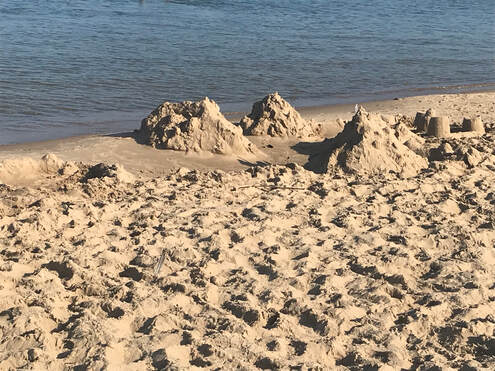
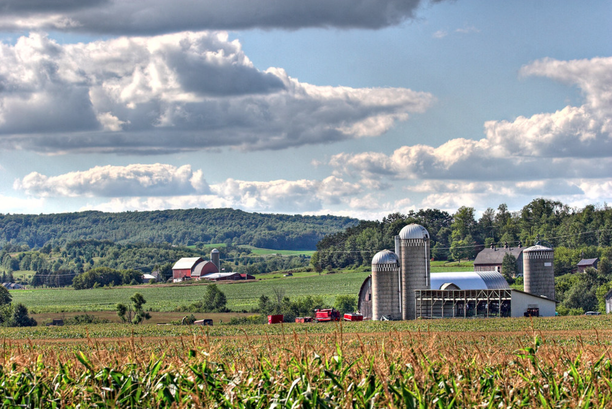
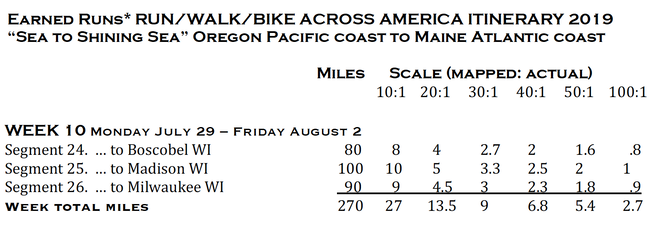
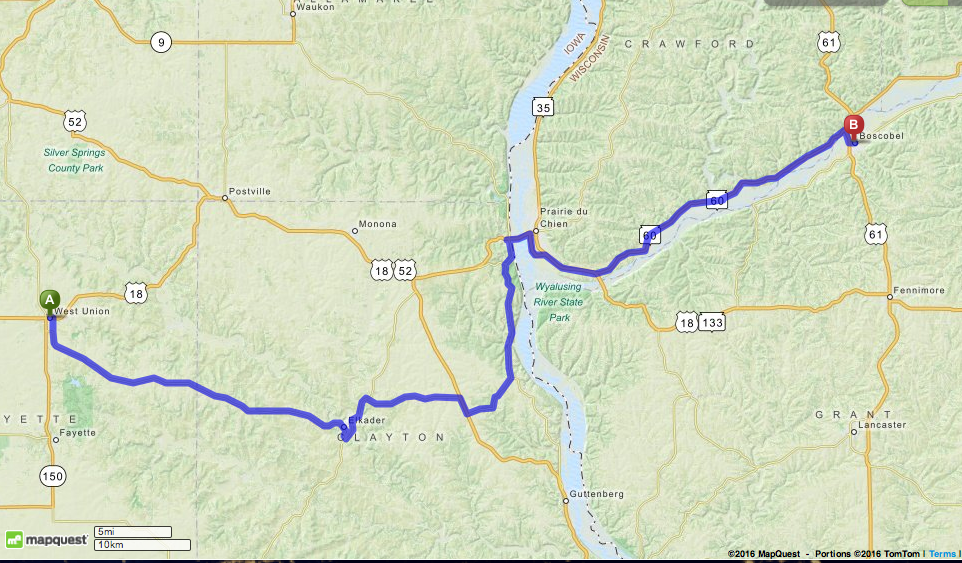
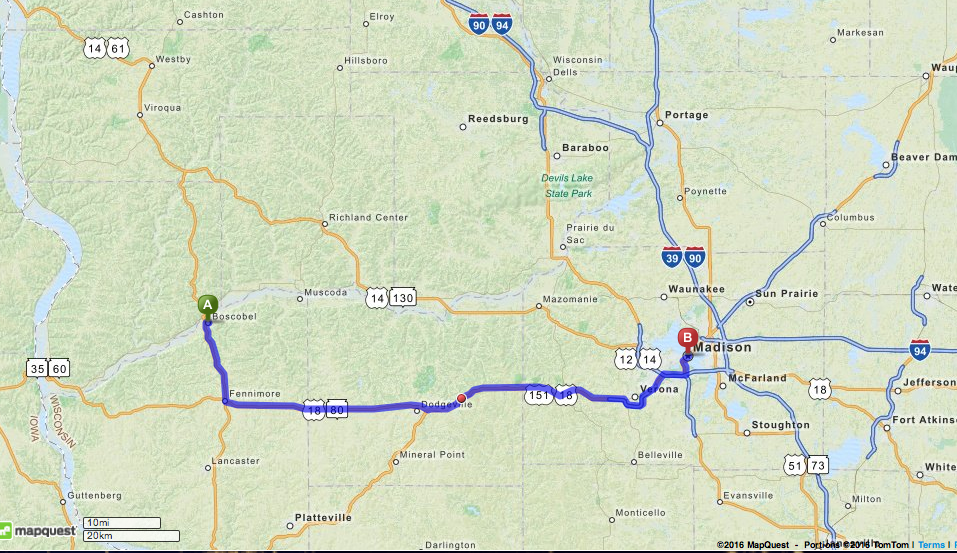
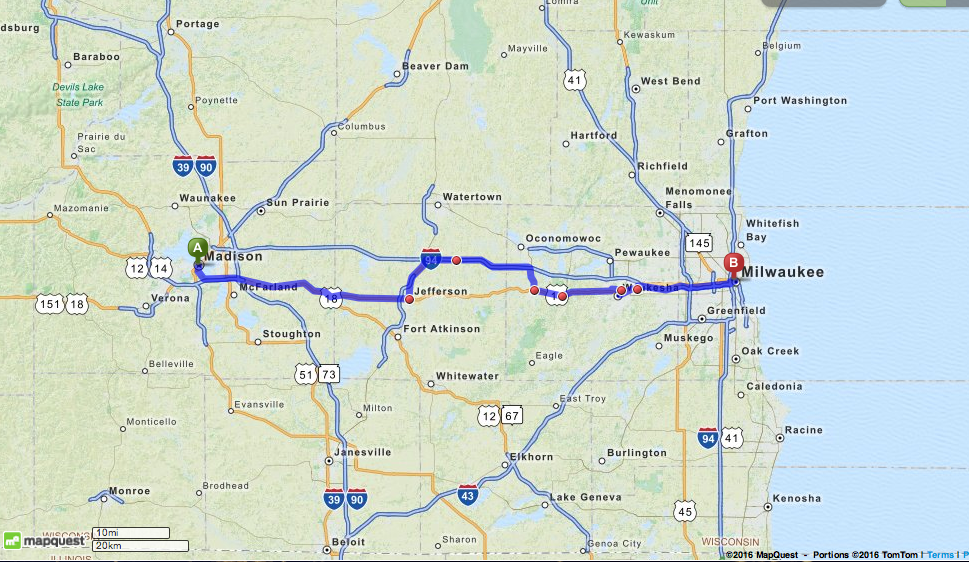
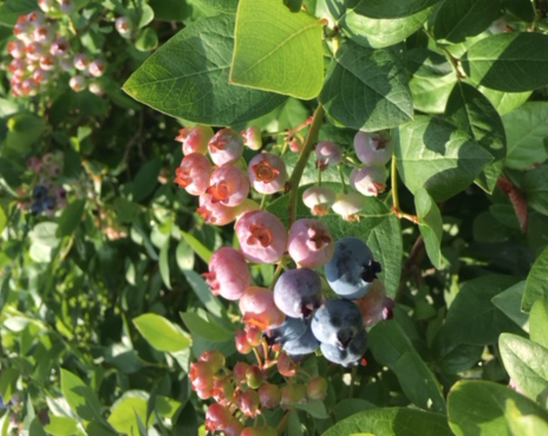
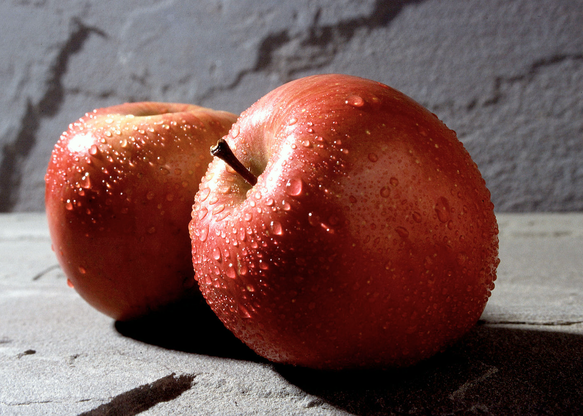
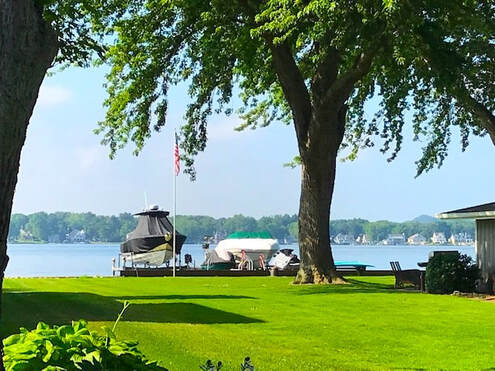
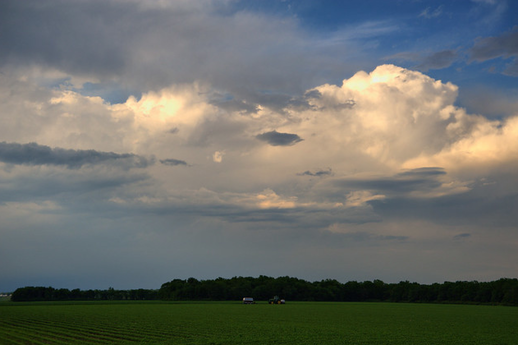

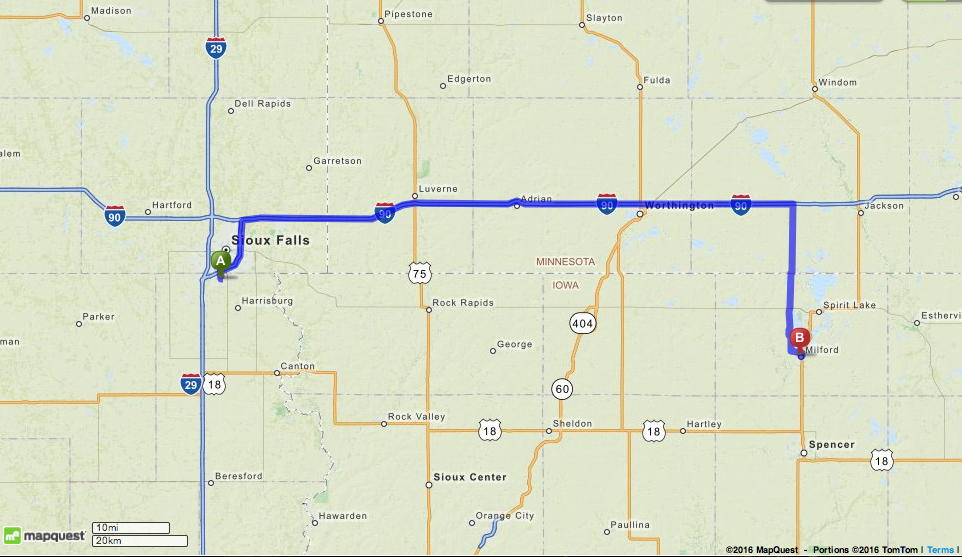
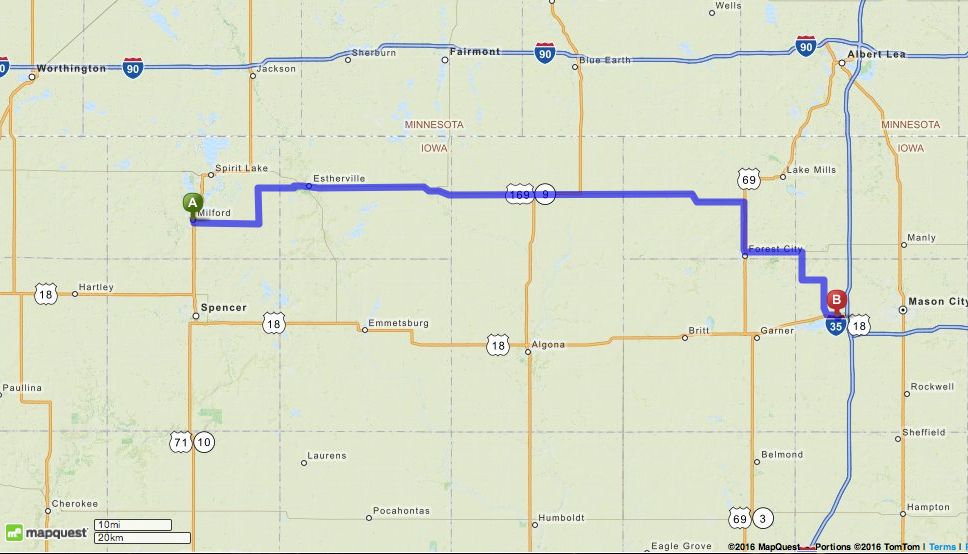
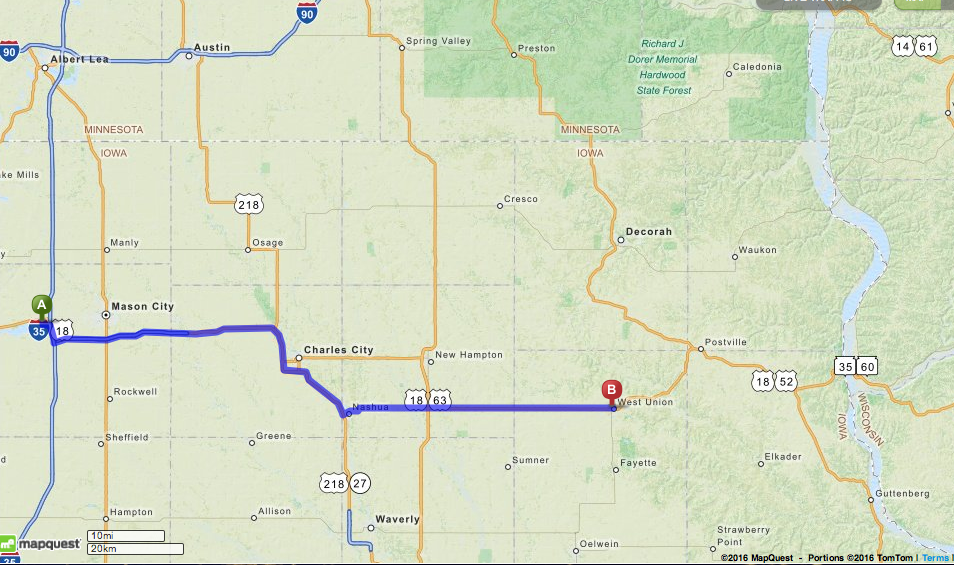
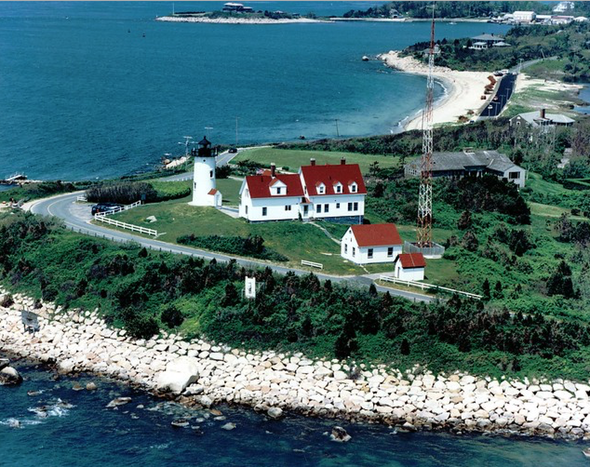
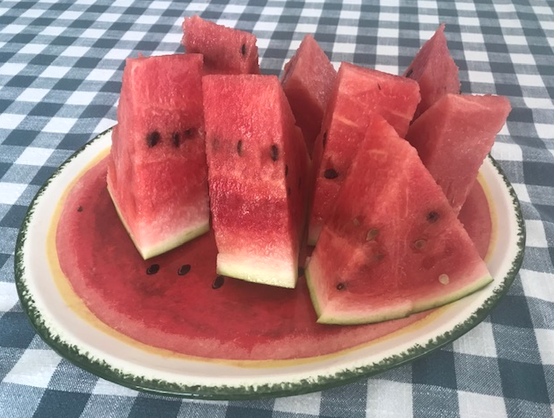

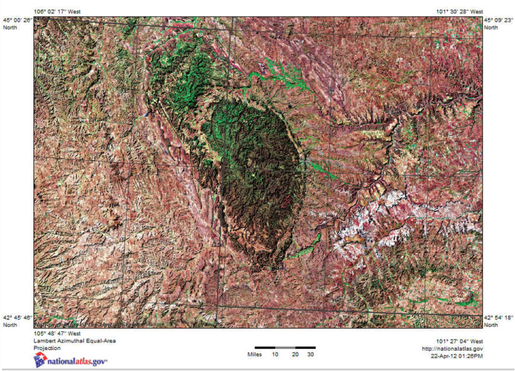

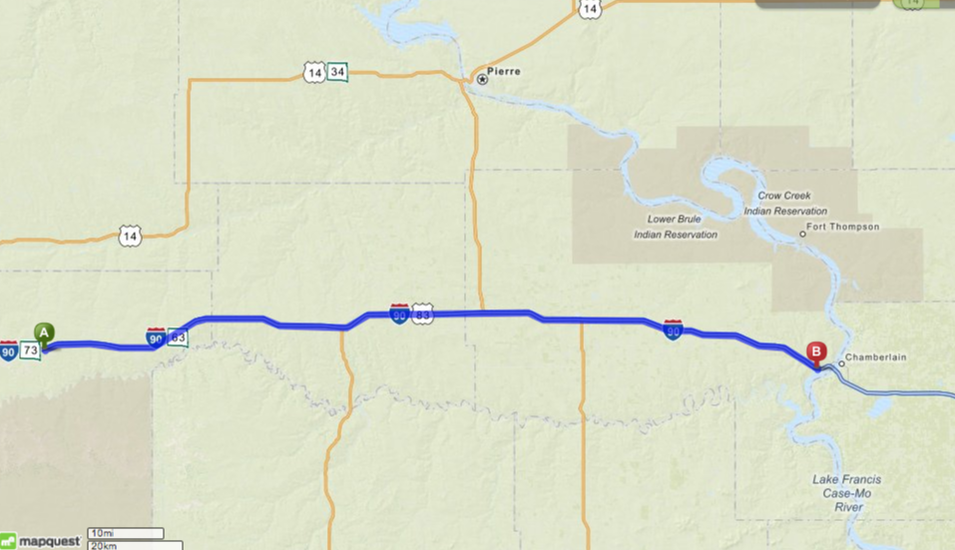


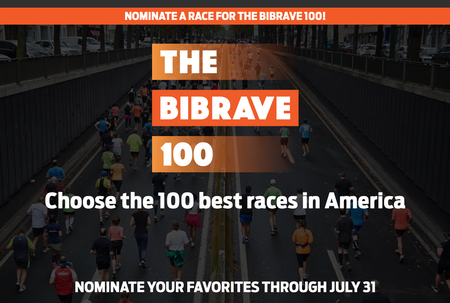
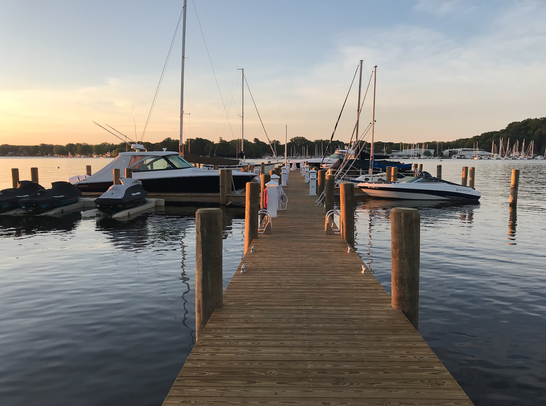
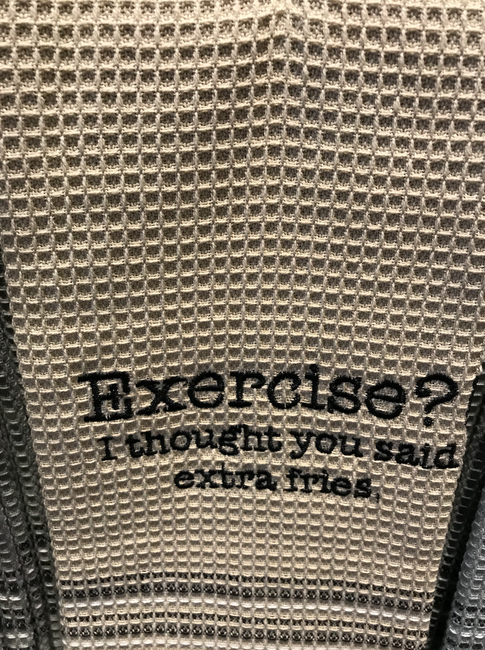
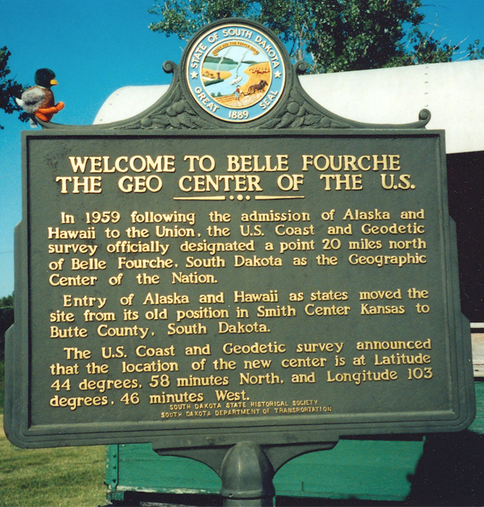

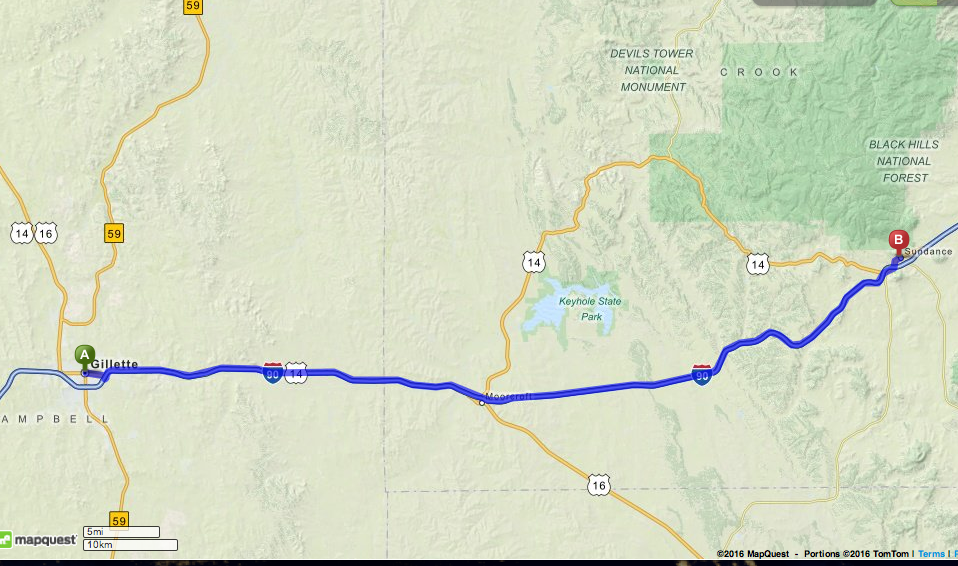
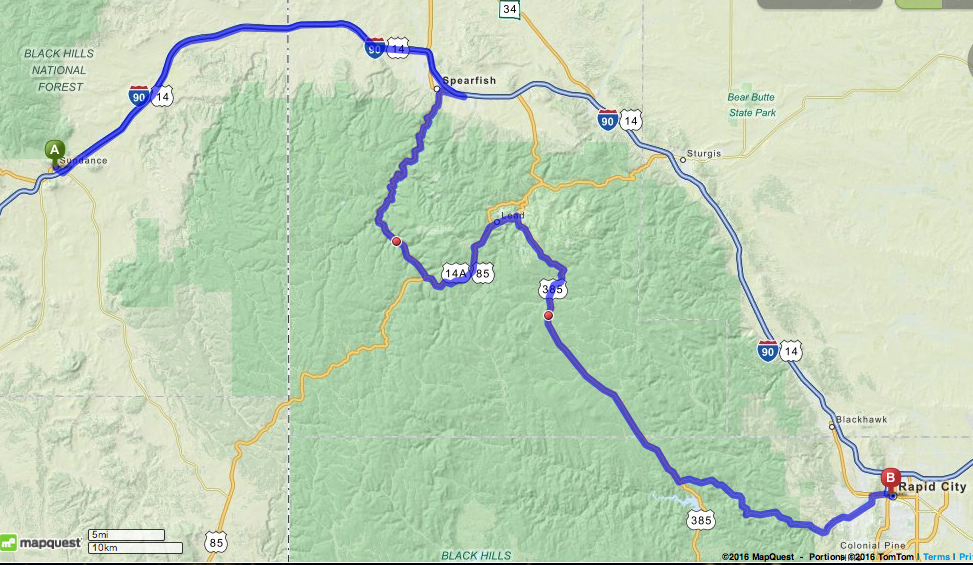
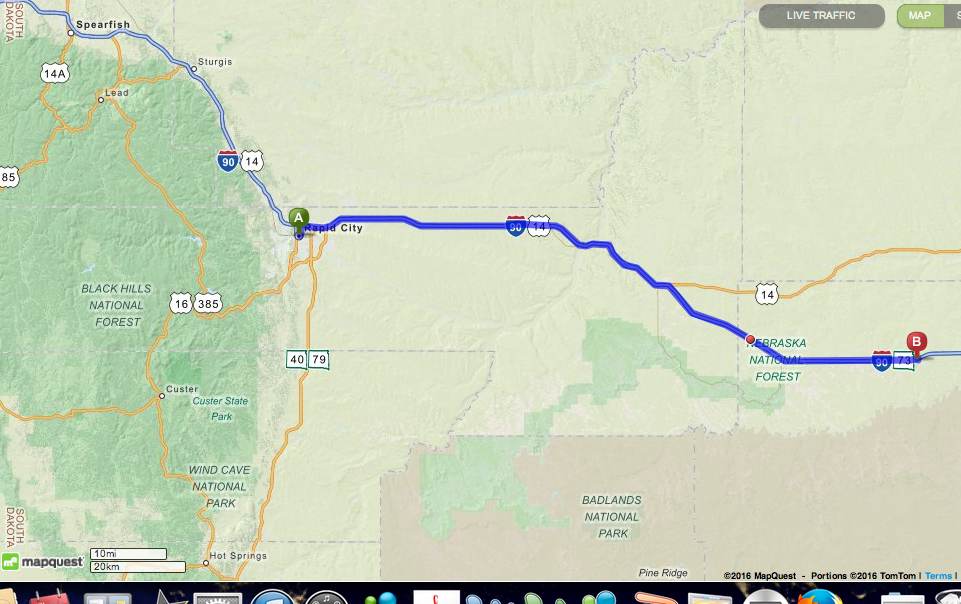
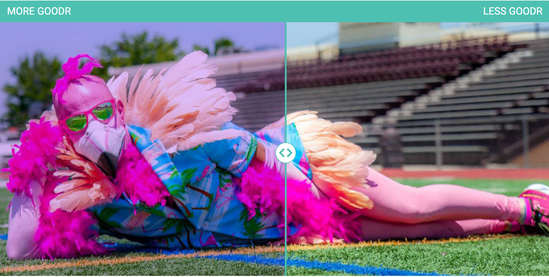
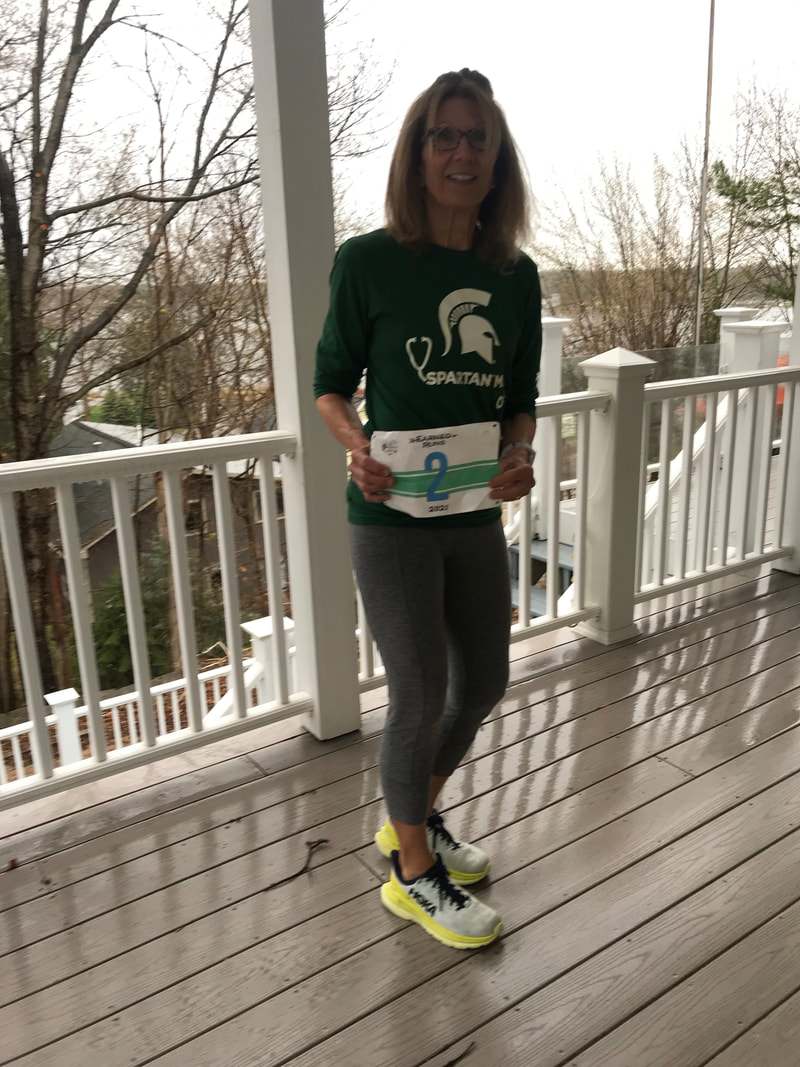
 RSS Feed
RSS Feed